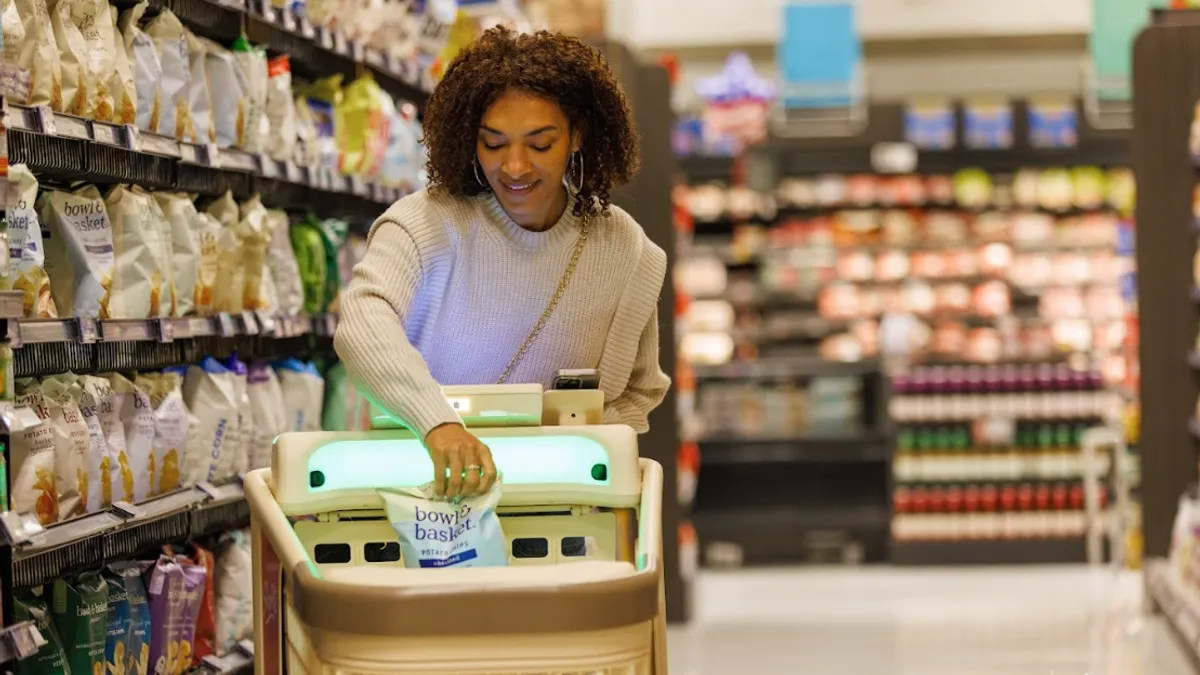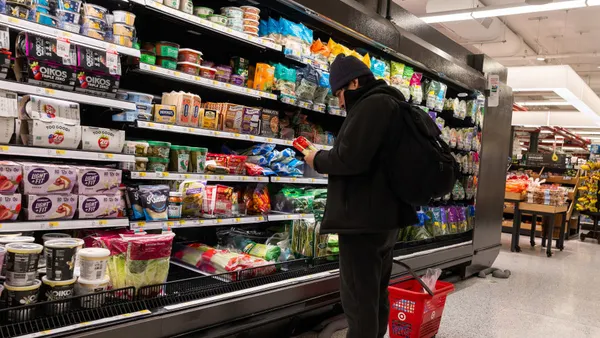Dive Brief:
- Food retailers spent an average of 1.3% of their total sales — more than $13 billion — on technology investments in 2022, according to new research from FMI – The Food Industry Association (FMI).
- Retailers spend nearly half that amount on technologies for maintaining existing systems and operations, Mark Baum, FMI’s senior vice president of industry relations and chief collaboration officer, said during a press call Wednesday.
- FMI expects technology investments to accelerate, citing its research that 83% of surveyed food retailers plan to increase their tech expenses in 2023, with almost a quarter (23%) saying those costs will likely increase a lot.
Dive Insight:
FMI’s information and insights into grocers’ technology investments came during a press call and new research release that provides a snapshot of where the industry stands.
The 74th annual Industry Speaks report found that 85% of retailers said they were experimenting with new technologies to improve the customer experience in 2022, up from 73% in 2021.
Technology experiments allow grocers to improve customer service, gain efficiencies that help relieve margin pressure, address labor woes and provide e-commerce, Baum said. But while larger retailers had previously owned the innovation space, now smaller grocers, including those with fewer than 10 stores, are increasingly seeking out new technologies and solutions providers in areas such as automated fulfillment and electronic shelf labels, Baum said.
One quarter of retailers and more than a third of suppliers are using artificial intelligence (AI) to track product preferences and spending to anticipate consumer wants and needs, Baum said. While AI is not a new area for the industry, Baum and FMI President and CEO Leslie Sarasin said that grocers are focusing more on the “responsible, ethical use” of artificial intelligence.
While 21% of retailers used technology services for foodservice ordering and delivery in 2022, 26% said they are planning to do so in 2023, per the report.
“We'd like to say these days if you're not technology enabled, you're competitively disadvantaged,” Baum said.
While technology innovation is gaining steam in the grocery industry, FMI’s research indicates that there’s room for grocers to make it more of a priority. Only 12% of surveyed food retailers said they used in-store technology such as robotics and AI as part of their service differentiation strategies in 2022, compared to 82% and 73%, respectively, who said the same for community support and curbside pickup. Less than a quarter (20%) said they used technology solutions in 2022 for fresh foods inventory and demand and production planning.
Certain technologies are seemingly losing importance among grocers, while others are picking up steam. For example, 29% and 11%, respectively, of food retailers said they used dynamic pricing and micro fulfillment in 2022, but only 13% and 6% plan to do so in 2023. Meanwhile, retailers said they plan to increase investments this year in mobile checkout, electronic shelf labels, smart carts and product traceability technologies.
Food suppliers spent almost twice as much (2.4%) on technology as food retailers did (1.3%) as a percentage of sales in 2022 — which isn’t surprising since suppliers have higher margins, more disposable income and more “far-flung operations,” Baum said.
FMI said that technology is one of the industry’s “imperative issues” and a “great enabler” to drive financial growth.
“Every CEO needs to at least think like a CIO, if not act like a CIO going forward,” Baum said.














